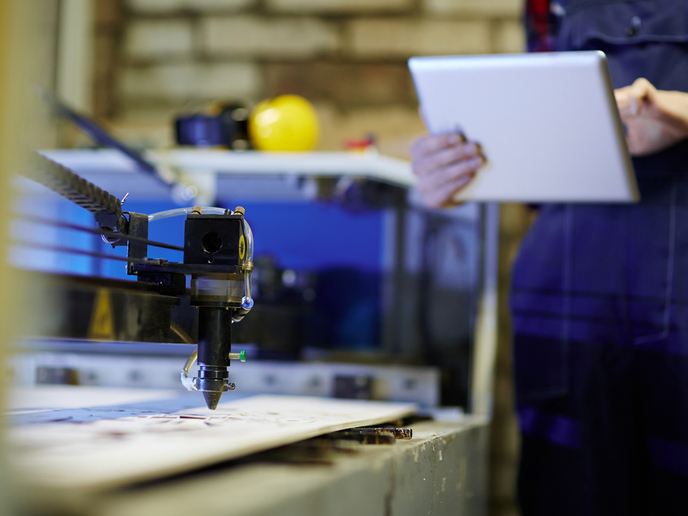An environmentally friendly alternative to toxic ship coatings
High-powered, ultra-fast lasers are increasingly used in various industrial applications, thanks to their ability to remove material of almost any kind. With smooth, melt-free cuts, even on a micron scale, ultra-fast lasers are particularly utilised in areas like toolmaking, where hard materials must be processed with great precision. However, such processes can be time-consuming. The EU-funded MultiFlex project addresses this challenge by developing an ultrashort pulse laser dot matrix system for making materials processing up to a hundred times faster than with existing ultra-fast laser processing systems. Scientists involved with the project have developed a new laser anti-fouling technology for the shipping industry. The new method will be used for engraving metal or plastic surfaces with hydrophobic (water repelling) properties so that they can replace the toxic varnishes used in ship coatings to stop algae or unwanted organisms from sticking to the hulls. A press release summarises the system: “Harnessing new photonics technology, a group of European scientists are currently developing a 1kw, ‘dot matrix’ ultrafast laser system that can carve flow-optimised metal or plastic surfaces capable of imitating the incredibly efficient skin from sharks.” It adds: “Etching tiny ‘spike’ structures onto sheet metal or plastic, the new laser system can create a rough surface at a microscopic level. This uneven topography can create a reduction in drag or inhibit the growth of bacteria, algae or even barnacles.” These anti-fouling properties will help decrease ship repair and maintenance costs while lowering CO2 emissions and fuel bills.
Alternative to harmful coatings
Quoted in the same press release, MultiFlex project coordinator Dr Johannes Finger from the Fraunhofer Institute for Laser Technology ILT says that in addition to maritime components, the technology could be applied to other areas like aircraft and turbomachinery. “Here, surface structures might inhibit cavitation and thus improve lifetimes of propellers of propulsion systems or water turbines. Our photonics system can also create design textures or ‘microcavities’.” The technique, used as an alternative to chemical etching, can be beneficial for the environment. The laser system developed by MultiFlex “sends super-fast pulses of concentrated energy to ablate - or cut - materials that are notoriously difficult to work with,” the news release adds. “Resembling a giant chessboard, the system splits a single beam into a grid of 64 ‘beamlets’, where every single ray can be turned on, off, positioned, and individually ‘tuned’.” The MultiFlex method “will ablate more than 150 mm3 in one minute,” according to Dr Finger. The ongoing MultiFlex (Ultrashort Pulsed Laser Processing at 1 Kilowatt Using a Flexible Multi Beam Approach) project will end in December 2021. The wider application areas of the ultra-fast laser technology include tool and mould manufacturing, automotive, electronics, and printing and embossing. For more information, please see: MultiFlex project website
Countries
Germany



